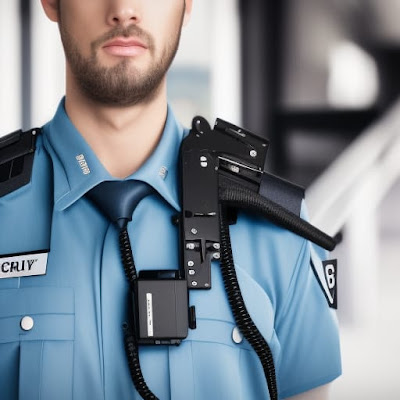Security guards play an important role in protecting people and property from harm. However, they can only perform this role effectively if they receive proper training.
Hands-on training is an essential component of the training process for security guards. It involves practical exercises that give guards the skills and knowledge they need to perform their duties effectively.
This blog post will provide an overview of the different types of hands-on training that security guards receive.
Physical Security Training
Physical security training is an essential component of hands-on training for security guards. It covers topics such as access control, patrolling techniques, and emergency response procedures.
Access control involves controlling access to buildings and facilities to prevent unauthorized entry. Security guards need to be able to identify potential threats and take appropriate action to prevent them from entering the premises.
Patrolling techniques are also an important part of physical security training. Security guards need to be able to patrol buildings and facilities effectively to detect and prevent security breaches.
They need to be able to identify potential security risks and respond appropriately to any incidents that occur.
Emergency response procedures are another critical component of physical security training.
Security guards need to know how to respond quickly and effectively to emergencies such as fires, natural disasters, and medical emergencies.
They need to be able to assess the situation and take appropriate action to protect people and property.
Physical security training is essential for security guards because it equips them with the skills and knowledge they need to protect people and property effectively.
Without this training, security guards would be ill-equipped to handle security threats.
Defensive Tactics Training
Defensive tactics training is another essential component of hands-on training for security guards. It covers topics such as hand-to-hand combat, use of force continuum, and non-lethal weapons training.
Hand-to-hand combat involves techniques for defending oneself against physical attacks. Security guards need to be able to defend themselves effectively in the event of an attack.
The use of force continuum is another critical component of defensive tactics training. It involves a set of guidelines for determining the level of force that can be used in a given situation.
Security guards need to be able to make quick decisions about the appropriate level of force to use in different situations.
Non-lethal weapons training is also an essential component of defensive tactics training.
Security guards may need to use non-lethal weapons such as tasers or pepper spray to defend themselves or others. They need to be able to use these weapons effectively and safely.
Defensive tactics training is essential for security guards because it gives them the skills and knowledge they need to protect themselves and others in the event of an attack or other security threat.
Firearm Training
Firearm training is a critical component of hands-on training for security guards. It covers topics such as firearms safety rules, shooting techniques, and tactical decision making.
Firearms safety rules are essential for security guards because they need to be able to handle firearms safely to prevent accidents.
Shooting techniques are another important part of firearm training. Security guards need to be able to shoot accurately and effectively to protect themselves and others in the event of an attack.
They need to be able to aim and shoot quickly and accurately under stressful conditions.
Tactical decision making is also an essential component of firearm training. Security guards need to be able to make quick decisions about the appropriate use of firearms in different situations.
They need to be able to assess the situation quickly and determine the appropriate level of force to use.
Firearm training is essential for security guards because it gives them the skills and knowledge they need to handle firearms safely and effectively in the event of an attack.
Role Play Scenarios
Role play scenarios are an important component of hands-on training for security guards. They involve simulated situations that security guards may encounter in their work.
Role play scenarios can include situations such as active shooter incidents, hostage situations, and theft prevention and apprehension scenarios.
Active shooter incidents are a serious threat that security guards may encounter in their work.
In these scenarios, security guards need to be able to quickly assess the situation, determine the best course of action, and take appropriate action to protect themselves and others.
Role play scenarios can help security guards prepare for these situations by giving them the opportunity to practice their response in a safe, controlled environment.
Hostage situations are another serious threat that security guards may encounter. In these scenarios, security guards need to be able to negotiate with the hostage-taker and take appropriate action to protect the hostages.
Role play scenarios can help security guards develop the communication and negotiation skills they need to handle these situations effectively.
Theft prevention and apprehension scenarios are also an important part of role play scenarios for security guards.
In these scenarios, security guards need to be able to identify and apprehend thieves who may be attempting to steal from a facility or its occupants.
Role play scenarios can help security guards develop the observational and investigative skills they need to identify and apprehend thieves effectively.
Role play scenarios are essential for security guards because they give them the opportunity to practice their skills and develop their abilities in a safe, controlled environment.
By practicing their skills in role play scenarios, security guards can be better prepared to handle real-world situations when they arise.
Final words
In conclusion, hands-on training is an essential component of the training process for security guards.
Physical security training, defensive tactics training, firearm training, and role play scenarios are all important parts of hands-on training for security guards.
Without this training, security guards would be ill-equipped to handle security threats and protect people and property effectively.
By receiving hands-on training, security guards can develop the skills and knowledge they need to perform their duties effectively and keep people and property safe.

Comments
Post a Comment